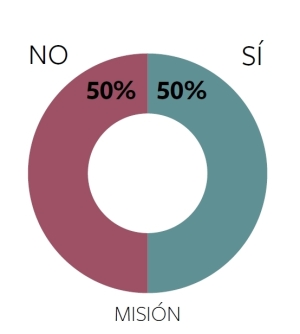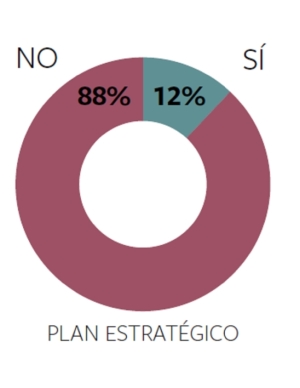Conxa Rodà
Museums are transitioning to become more social. Within this current context, transparency turns out to not only be a duty but also a strategy for getting better connected with the audience. All good relations are based on trust and being transparent gets us closer to achieving the highly sought-after engagement with the public.
The report published in June 2015, A través del espejo (Through the mirror), provides a rigorous analysis by means of the revision of 60 Spanish art museums and passing them through a filter of 24 indicators of transparency and good governance.
From this blog we would like to congratulate the initiative of the Fundación Compromiso y Transparencia (The Commitment and Transparency Foundation) and of the Foro de Cultura y Buenas Prácticas (Forum of Culture and Best Practices) for boosting the study carried out by María Fernández Sabau, Javier Martín Cavanna and Pilar Gonzalo.
The study updates and expands the facts and figures from the first report produced 5 years ago.
Criteria and indicators of transparency
The establishment of a series of quality indicators is in itself one of the strengths of the report. The fact of defining how we measure our actions is something which is key for being able to evaluate our performance.
Based on the premise that “Transparency doesn’t consist of posting content on the website, but making sure that it’s visible”, the report has fixed 4 principles or requirements:
- visibility: content easy to find, and not “hidden” under multiple layers of browsing
accessibility: open to everybody, without the need for registering or introducing passwords - updating: content regularly kept up-to-date
- integral information: providing complete and exhaustive information, nor partial or fragmented
The 24 indicators are structured in 9 fields, that include everything from the mission and strategy to the activities, the organisation, the collection management policy, the economic information and the evaluation.
Results
According to the degree of transparency, the museums have been categorised into transparent – they fulfil a minimum of 16 indicators out of 24– (3 museums); translucent –from 8 to 15 indicators– (15 museums, among which ours was included) and opaque –less than 8 indicators– (42 museums out of the 60 studied). It was therefore highlighted that there is a major need for improvement.
We will begin by specifying the surprisingly high negative percentages:
- 50% of the museums don’t make their mission explicit
- 88% don’t include a strategic plan (even though, as we will be commenting below, something that is more serious than this indicator is what it seems to make clear: the non-existence of a plan)
- 88% don’t provide any information about the organisational structure. Only 7 out of the 60 museums publish an organisation chart.
- 82% don’t include the statute or regulations for which they are ruled
- 88% don’t include the budget
- 80% don’t publish an annual report
- 90% don’t publish the figures regarding the visits
- 100%(that is to say, none) of the museums make it explicit on their website, the collections policy, a practice that, in contrast, is much more extended in the Anglo-Saxon museums (MoMA, Met, British, Victoria and Albert, amongst others).
Among the positive results:
- an increased improvement can be seen in terms of the specification of the economic indicators: in 2010 only 2 out of the 51 museums studied included them, while in 2015 there are now 14 out of the 60. There still remains, obviously, a lot of room for improvement, but the tendency seems clear.
- 73% specify the educational activities and indicate which audience segments they are aimed at.
- 1/4 of the museums provide information regarding the management of the collections, loans and acquisitions.
In the report, however, no mention is made regarding the concept of Social Corporate Responsibility. It’s not mentioned even when talking about policies, codes of good governance, or organisational information. In this sense, precisely in the Museu Nacional, and for around the past three years, we have been working very thoroughly in this respect, because we are convinced that Social Responsibility is directly linked with our mission as a public museum. We’ve still got a lot of work to do, given that it is a work in continual progression, but we published the principles, the Ethical Code and the actions in the website. It isn’t included in the report either, the rich section about Education in the website.
It’s possible that other museums have also detected some other omissions that affect them, which would be natural in a work of this dimension. I believe it would be good if an updated version were to be published having collected the eventual amendments and suggestions.
Recommendations
The transparency report concludes with 10 recommendations that I condense into four, adding a personal assessment. The first one sums up altogether:
- to adopt transparency as a goal to be achieved and to dedicate the necessary reflection and effort to it so as to be accountable for what we do, above all the public museums.
- The non-inclusion of the strategic plans in the websites is often due to the lack of existence of such plans. In times of uncertainty, it is more necessary than ever to know our mission, to fix goals, to determine what our target audiences are and how we aim to reach them, that is to say, we need to define the reason why, the what, for whom and how. Once we have outlined the way, it will be as, if not more, important to share it with the whole organisation _that, optimally, will have participated in the strategic process_, and it should be communicated publically, through the website among other means.
- not considering that posting documents and annual reports in PDF format makes them accessible. It is necessary to include the main content in the body of the website and, in any case, to refer to the PDF for access to the complete documents. Apart from the fact that the contents in PDF are not indexed, it also means an added step for accessing the information, something which makes it less accessible, and even more so when mobile browsing. The creation of pages with their own specific URL, different from the general one, is unadvisable, and it is recommended to include all the contents in just one website of the museum.
- it is strongly recommended to include the financial reports as well as an external auditing report.
And let me just make a couple of recommendations to the promoters of the study: even though it clearly remains outside the reach, because it specifies that what it analyses is websites, I believe that it would be pertinent to make some mention of the blogs and social media. The blogs constitute a very good platform, easy to maintain, in which the museums share internal processes and decisions; and the social networks, now that the contents are indexed by Google, also turn out to be relevant for retrieving information and images, for example, of the movements of the works, that many museums spread on the network. It is however true that websites are the most official and stable channel and where it is necessary to be transparent, but there are more and more other digital platforms that help the museums to communicate the everyday tasks in a more direct, immediate and transparent way.
The other suggestion would be to include an indicator about the possibility, or not, for the users to make comments. I cannot think of a better example of transparency or good governance than opening up the dialogue with the public and in public.
Making the way towards transparency
There is no doubt whatsoever that the fact of coming into force of the Llei de transparència (The Law of Transparency) access to public information and good governance (DOGC Nº. 6780, of 31.12.2014), will help to accelerate the Catalan museums in this direction.
We welcome reports and studies that place on the table an analytical and critical vision. Tools such as Through the mirror are useful for the museums studied and for all the museums in general. They help to detect weaknesses and to bring out opportunities for improvements. The users (and the professionals) of museums want open and transparent museums.
As users, have you ever been “frustrated” at not being able to access certain information of a museum? As professionals of museums, do you find it difficult to extend the objective of transparency in your centres?
Related links
A través del espejo’. Transparencia y buen gobierno de los museos de Bellas Artes y Arte Contemporáneo 2015, pdf (in Spanish).
Portal de transparencia, Generalitat de Catalunya
Co-directora del Curs d'Estratègia Digital_UOC_Museu Nacional d'Art de Catalunya
Co-directora del congrés CIMED de Museos y Estrategias Digitales










